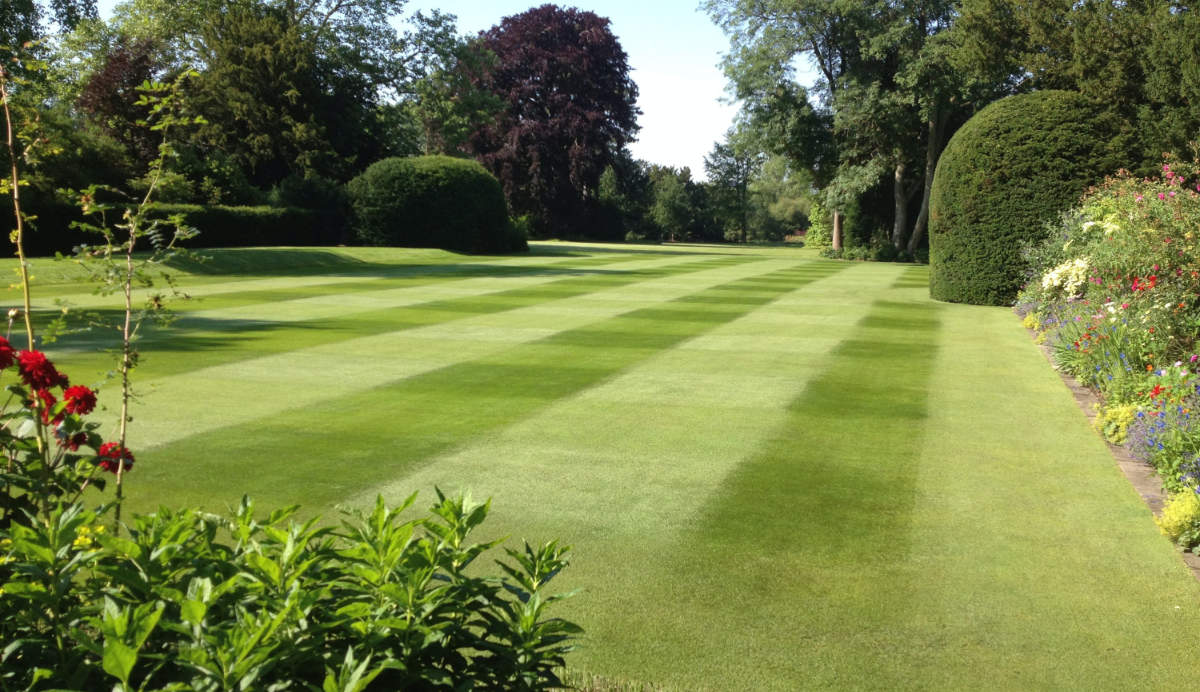One downside of the recent sunny weather (it was the sunniest May on record in the UK in 2020) is that many garden lawns have begun sporting a yellow, straw-like complexion which can appear quite worrying. Our summer lawn tips can help keep your lawn green in summer, plus expert advice on how to recover and repair your lawn in autumn after a hot summer.
The good news is that lawns can take a bashing and are very drought-resistant. The situation looks worse than it is and most lawns will flourish again once the rain inevitably returns. Think of your lawn not as dead but resting, or as the living dead if you wish to add some dramatic flair.
What causes dead patches on a lawn?
Lawn expert David Hedges-Gower explains: “These plants, [yes, they are a plant] have evolved and adapted to many different waves of weather and to evolve they have had to come up with methods to survive. One ingenious method is simply to stop working during the heat that we are seeing right now.”
Guy Barter, chief horticulturalist at the RHS says: “The actual dividing cells of grass are at the base of the leaves unlike other plants which grow from the tips of shoots. These buds sit out drought at ground level and, except in severe situations, green up again once rains fall sending out new roots and leaves.”
Watering your lawn in summer
There are still some measures you can take to help your grass while it is in this dormant state though. For those who are still mowing their lawn, the Royal Horticultural Society recommends raising the height of the cut, as it could be weakened if made too short. In addition, consider leaving some small clippings on the lawn as this will help to conserve what little moisture remains.
Watering your lawn is not always essential, but if you choose to do so the best time would be early morning or at night when temperatures are at their coolest. This will reduce the amount of water that evaporates in the heat before it can be absorbed into the soil.
If you are cutting your grass (every couple of weeks should be OK) take the grassbox off. Leaving clippings on the lawn will help conserve what little moisture there is.
When the heatwave ends, pay close attention to your lawn as it recovers in the following weeks, as weeds and moss can grow in areas where the grass has become patchy. Do not water your lawn excessively to make up for the recent drought, as this could only encourage moss to grow and make your lawn even less tolerant to drought in the future.
In the meantime, try not to worry about the state of your lawn in this heat. Grass is very resilient and in the vast majority of cases will quickly grow back once the usual British weather resumes.
Summer lawn tips – how to keep your lawn green in summer
Summer is, however, the time when your lawn gets a hammering – from kids, garden party guests and pets. So, when the heat is on, how do you keep your grass looking great?
“After a particularly mild winter, where weeds may have taken hold in spring, warmer temperatures from June to August affect how and what you should do to maintain your lawn,” says Steve Taylor, technical lawn expert and adviser to GreenThumb lawn treatment service.
He offers these simple summer lawn tips for those wanting to keep your lawn green in summer and in peak condition.
Lawn maintenance
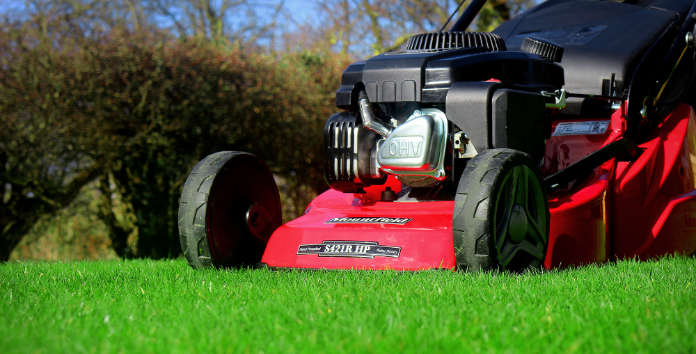
This spring has been dry and cool and we are now into summer – now is not a good time to be doing much in the way of the aeration and scarification. Cut your lawn correctly by not mowing below 25mm in summer.
Watering your lawn
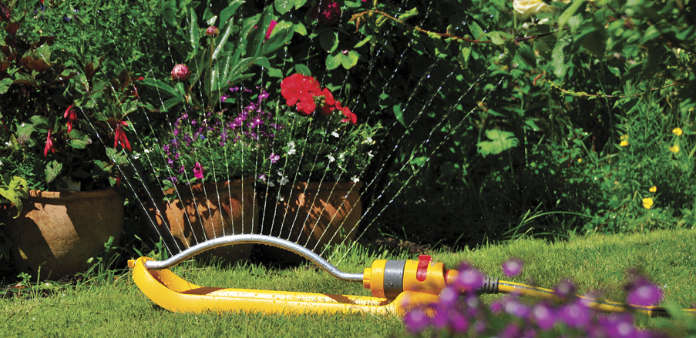
Adapt your watering schedule to the weather. If you do not water the grass, it will dehydrate and a weak lawn will leave an opportunity for weeds and all the wrong types of grass to germinate and grow in it. Water using a sprinkler, moving it about the lawn from place to place leaving it in each area for approximately 10 minutes but no longer. Some people soak it once a week but we find it best to start watering before the soil dries out. If the lawn has slight tinges of brown, then get watering now.
Mowing a lawn in summer
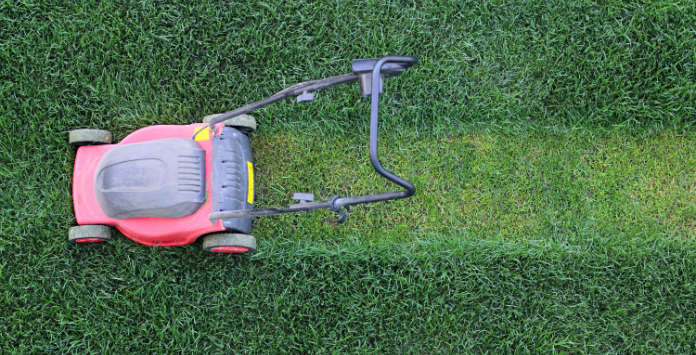
The most common mistakes concern cutting height and when not to cut. When cutting in spring, keep the height at not less than 25mm (1in). In warmer, drier periods raise the height of the cut to 40mm (1.5in) but if it remains really dry and watering is difficult, then up to 50mm (2in). When the grass is not growing and is becoming brittle, do not cut it. If the lawn has become dry, watering is essential if you want to keep it looking good and you may have to increase your watering program to recover the lawn. Only when you start to see the lawn recover, is it time to restart cutting again.
Lawn treatments
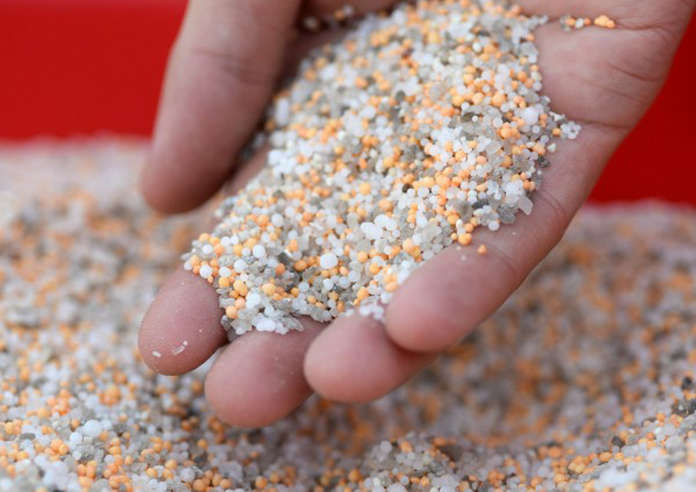
These should be nutrition-based and applied at both the start and towards the end of the summer. By applying an early and late summer treatment, each plant in your lawn will be strengthened to withstand warm conditions and will ensure a healthy and vibrant green coloured lawn for you to enjoy on long summer days.
Summer lawn tips – making the most of autumn
While your lawn may have had a tough summer, grass is one of the most resilient plants on earth and with a little TLC can be easily revived.
Time needed: 1 day
Here, lawn specialist David Hedges-Gower, author of Modern Lawn Care, explains what has been happening both above and below ground during the scorching summer months, and offers some summer lawn tips for getting your grass back to a healthy green state as soon as possible…
- Give soil some air
The combined heat and drought will have shrunk the soil – and grass hates dried and compacted soil. It needs air and water to thrive and maintain strong root systems.
So once the heat passes and the soil stops baking, start autumn renovation below ground with some aeration, because the key to any plant health is good working soil.
“Don’t follow the advice to go around digging into the lawn with a garden fork,” says Hedges-Gower. “Your mission is to decompact the soil, not just add some holes and using a solid tined garden fork will not achieve this.
“Instead, use the tools designed for the job. Hollow-tine aerating forks and machines do exactly what your lawn needs; they remove cores of soil without further compressing what’s left and this creates those essential small channels for improved root development, water percolation and nutrition longevity.”
A machine can aerate a small-medium (250m²) lawn in around 20 minutes. A hollow tine fork takes longer but is still fine for a small area.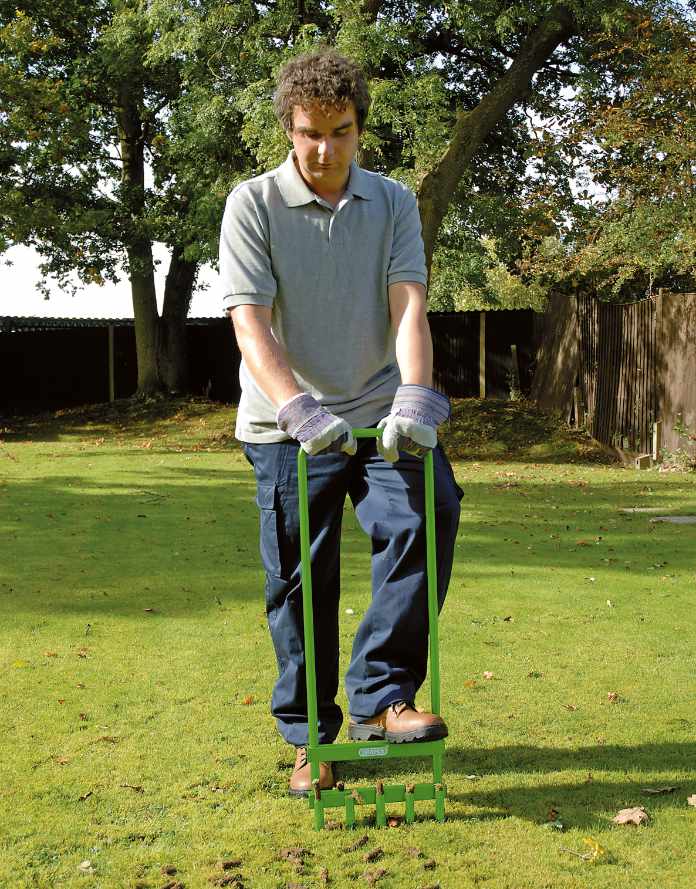
- Don’t worry that the grass is dead
Because, it’s absolutely not. Any healthy grass will not have died below ground. The dead brown leaves are simply what happens when it shuts down as the mercury rises and the plants’ own reserves are exhausted.
Autumn rains will soon see green growth reappear. But those dead blades of grass on top will have created some excess thatch that you now need to sort out, so you’ll need to scarify the lawn to get rid of it.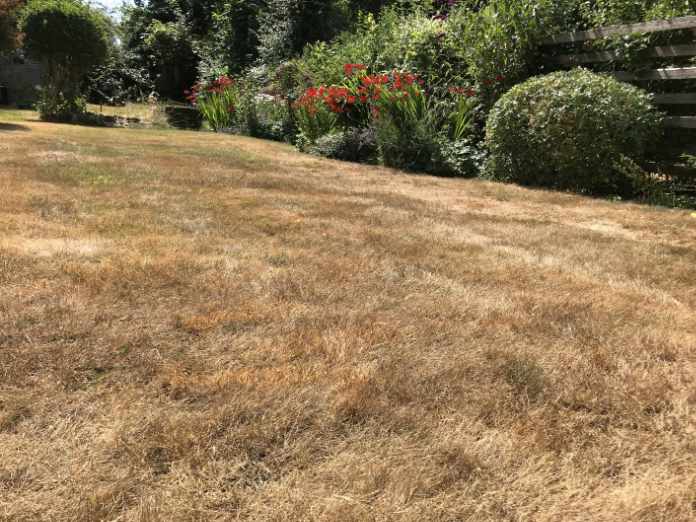
- Remove lawn debris too
For small areas, you can get by with a wire rake, but this will never scarify as well as a powered ‘bladed’ machine. A purpose-designed scarifying machine will slice through the shoots, leaves and stolons (or runners), maximising the grass’s ability to regenerate from the re-emerging plants. Some patches may need the addition of new grass, and as you are improving conditions in the soil and on the surface you can also do some overseeding.
Choose between a blend of natural species (bents and fescues, or what is often referred to as a ‘luxury lawn mix’) or a dwarf ryegrass mixture for increased wear and tear.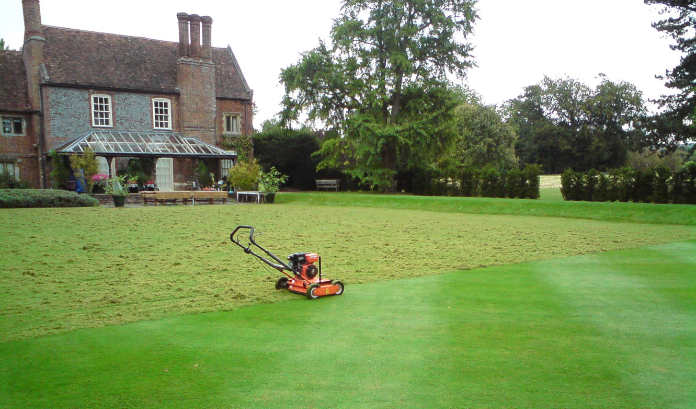
- Control moss
Whether you are doing a renovation or maintenance scarification, now is the perfect opportunity to apply moss treatment. Remember to do this following scarification, not before, so that the moss killer can kill the moss plants and spores at the base of the grass.
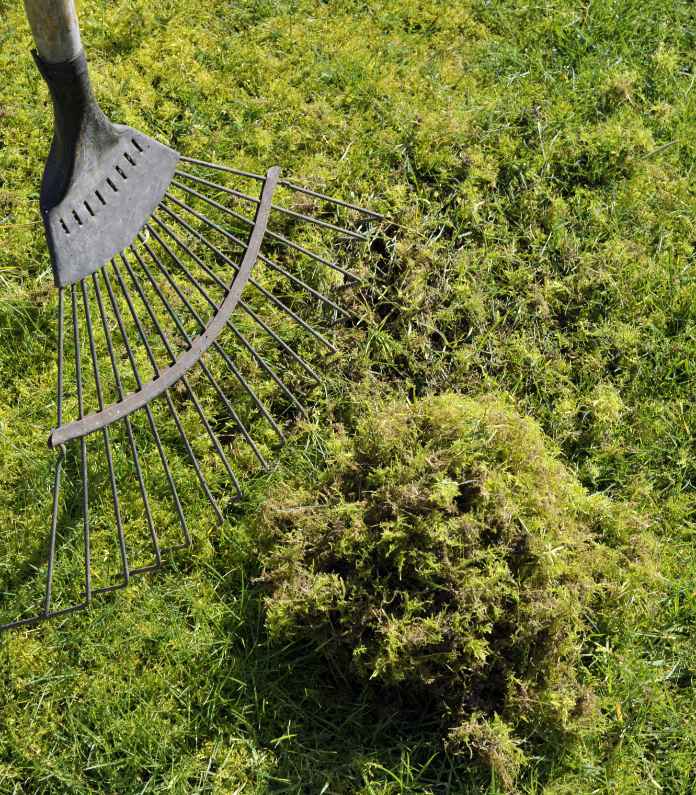
- Feed your lawn
Your lawn may have stopped growing before the long dry spell, and been living off of its own food reserves since – so will now need feeding. But what do you feed it, and how much?
Over-feeding should not be too much of an issue this autumn, but in these conditions you should avoid a high-nitrogen quick
release fertiliser. Instead, use a feed that has a small amount of phosphate and potassium, as well as nitrogen.
A well-balanced feed for these conditions would be something like a 15-5-12 (nitrogen/phosphorous/potassium) fertiliser applied at 25g/m². This will give you just enough nitrogen to last for 10 weeks or so.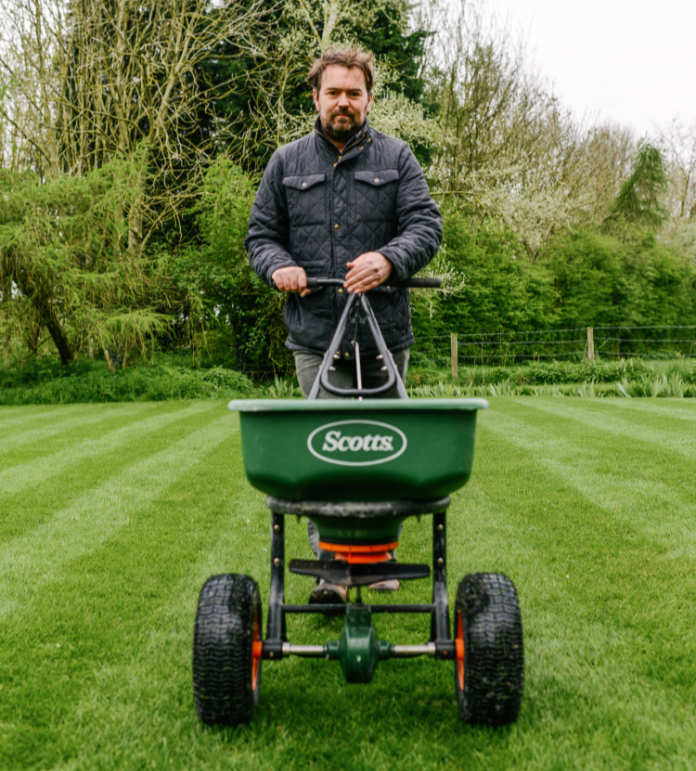
- Slow down on mowing
Lawn growth should be starting to slow down, so you can begin reducing the regularity of mowing, and at the same time gradually increase the cutting height.
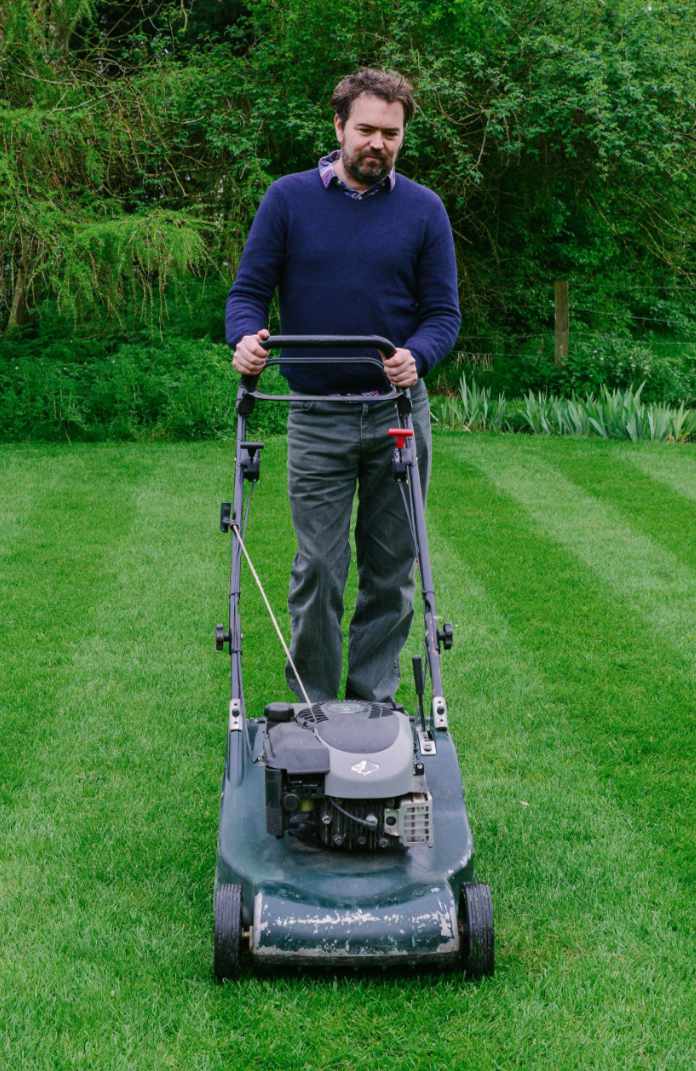
Read our guide to 7 lawn care tips to follow for the perfect lawn.
Best-selling lawn care products
Stuck for inspiration? Check out our list of best-selling Amazon products!
- Creates a thicker, greener and healthier lawn whilst killing weeds and moss
- Easy to use
- Good product for use
- Creates a thicker, greener and healthier lawn whilst killing weeds and moss
- Easy to use
- Good product for use
- Creates a thicker, greener and healthier lawn whilst killing weeds and moss
- WaterSmart formula helps absorb water and nutrients more effectively, helping to protect your lawn against drought and stress
- For ideal results, apply using an EverGreen or Scotts spreader to ensure even coverage
- Lawn Feed Weed & Moss Killer 15kg
- Excellent coverage Covers 750 metres squared of lawn (3 x tennis courts)
- Kills moss directly
- Lawn Fertilizer
- Easy to use
- Good product for use
Last update on 2024-04-03 / Affiliate links / Images from Amazon Product Advertising API
This article may include affiliate links to products and services where we may receive a small fee to support the running of this site if you make a purchase or is a sponsored article from one of our select editorial partners providing valuable advice and information to our readers.























































